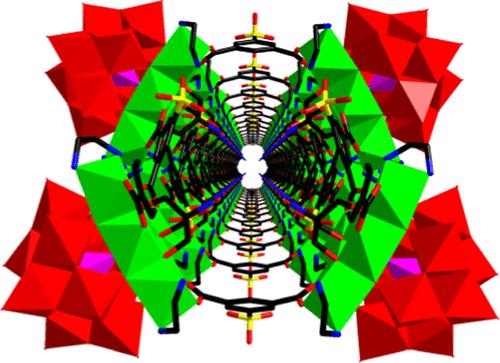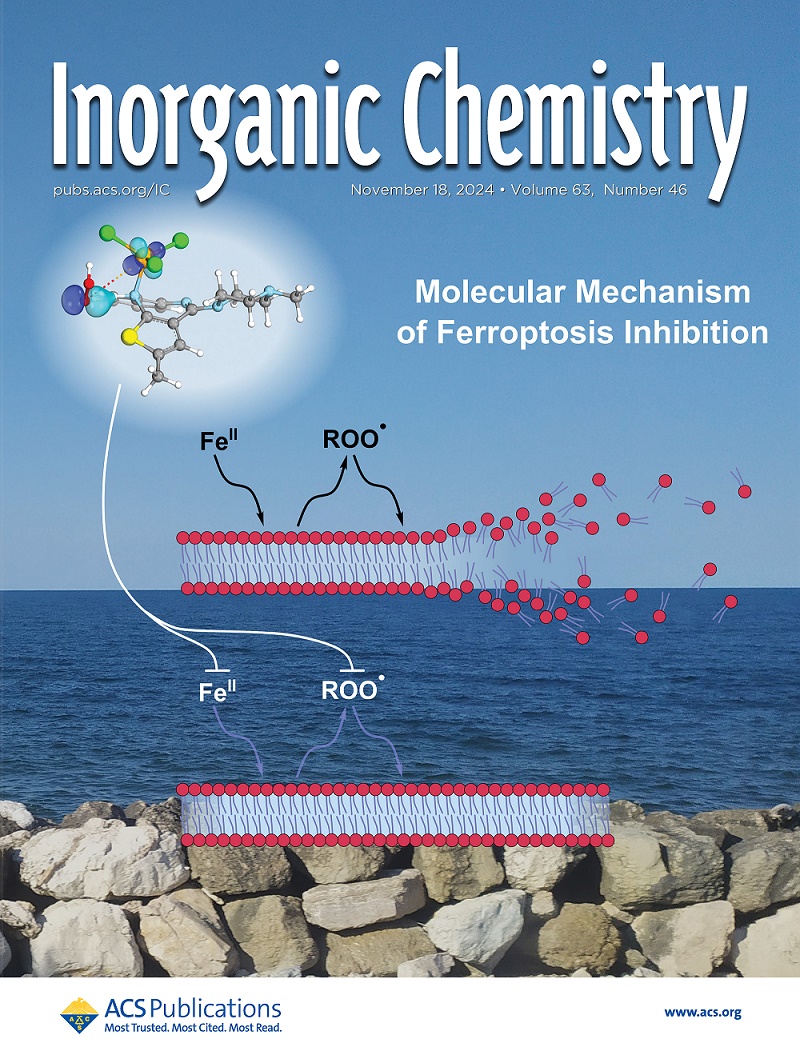Stable Polyoxometalate-Based Metal–Organic Framework: Synthesis, Modification, and Catalytic Activity
IF 4.3
2区 化学
Q1 CHEMISTRY, INORGANIC & NUCLEAR
引用次数: 0
Abstract
Metal–organic frameworks (MOFs) with polyoxometalates (POMs) as the nodes usually feature a high stability. Those with available space and modifiable groups are expected to serve as a catalytic platform. In this work, a polyoxometalate-based metal–organic framework (POMOF)-bearing channel with a transversal surface of ca. 1.1 × 1.8 nm, [Ni(en)2]4H{[Ni6(tris)(en)3(SIP)1.5][B-α-PW9O34]}2·32H2O (1), was resulted by the collaboration of multiple ligands. The channel was lined with abundant amino groups that bonded with water molecules in it via hydrogen bonds. Compound 1 exhibited excellent thermal and chemical stabilities, which was confirmed by immersion experiments, in situ variable temperature powder X-ray diffraction, and reversible dehydration–hydration behavior. Pristine 1 showed remarkable activity in the hydrogen evolution reaction. According to the presence of amino groups in the channel, 1 was modified by Pd species. Resultantly, Pd was loaded into the channel successfully. The yielding material 1-Pd smoothly catalyzed the Suzuki–Miyaura coupling reactions.

求助全文
约1分钟内获得全文
求助全文
来源期刊

Inorganic Chemistry
化学-无机化学与核化学
CiteScore
7.60
自引率
13.00%
发文量
1960
审稿时长
1.9 months
期刊介绍:
Inorganic Chemistry publishes fundamental studies in all phases of inorganic chemistry. Coverage includes experimental and theoretical reports on quantitative studies of structure and thermodynamics, kinetics, mechanisms of inorganic reactions, bioinorganic chemistry, and relevant aspects of organometallic chemistry, solid-state phenomena, and chemical bonding theory. Emphasis is placed on the synthesis, structure, thermodynamics, reactivity, spectroscopy, and bonding properties of significant new and known compounds.
 求助内容:
求助内容: 应助结果提醒方式:
应助结果提醒方式:


